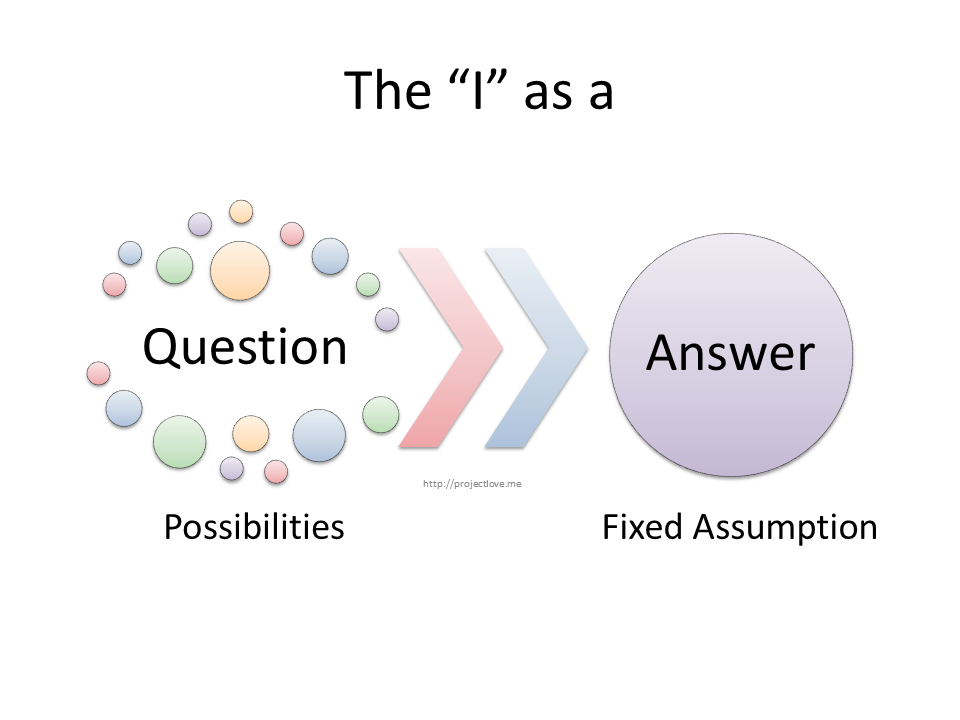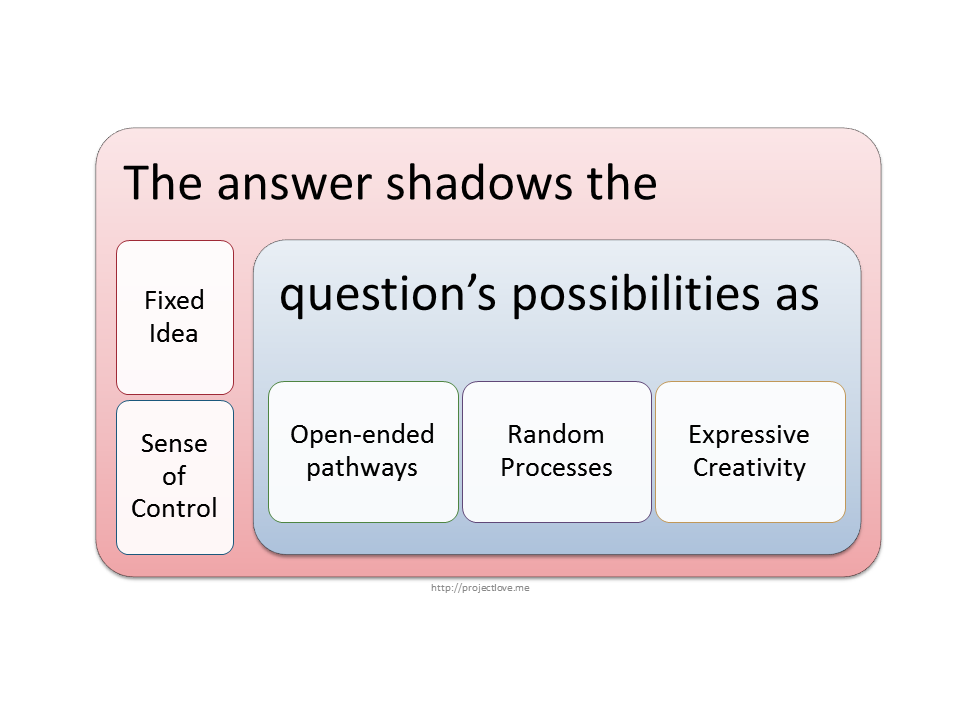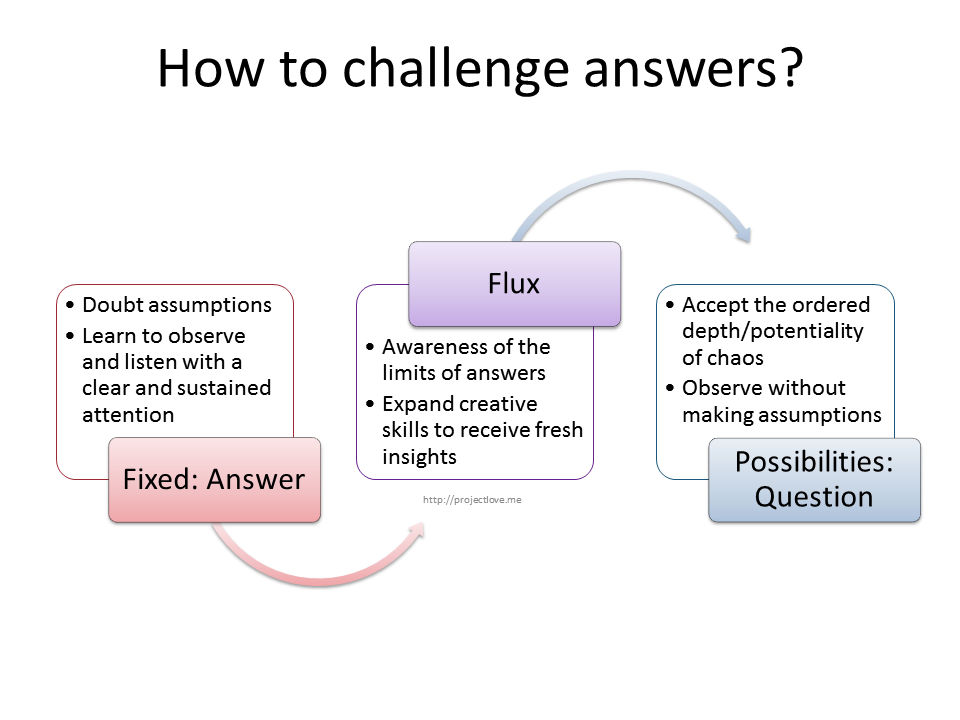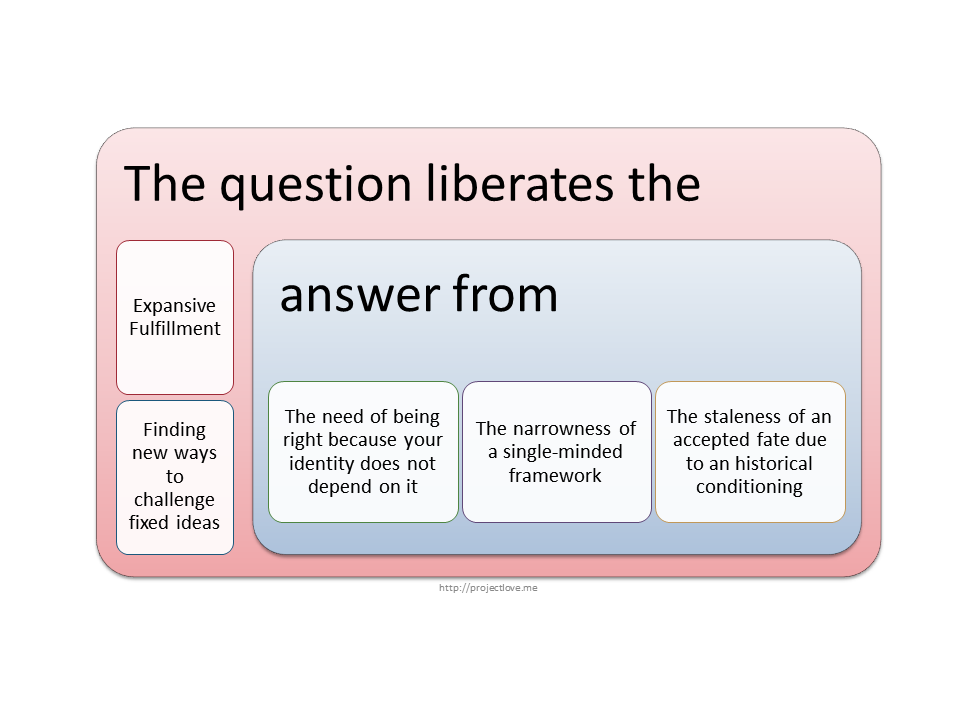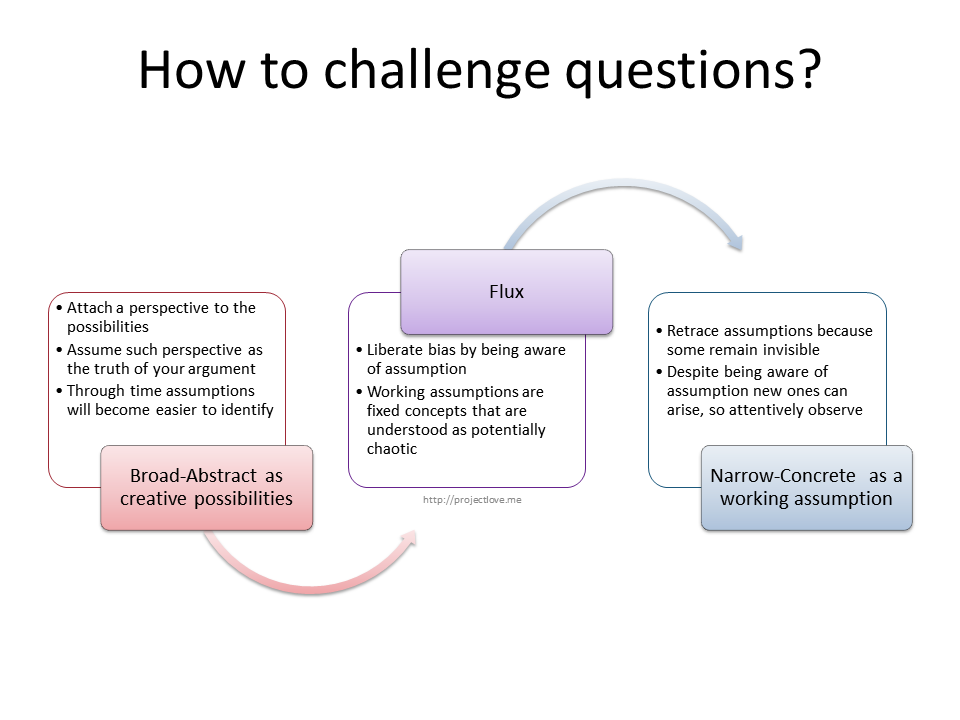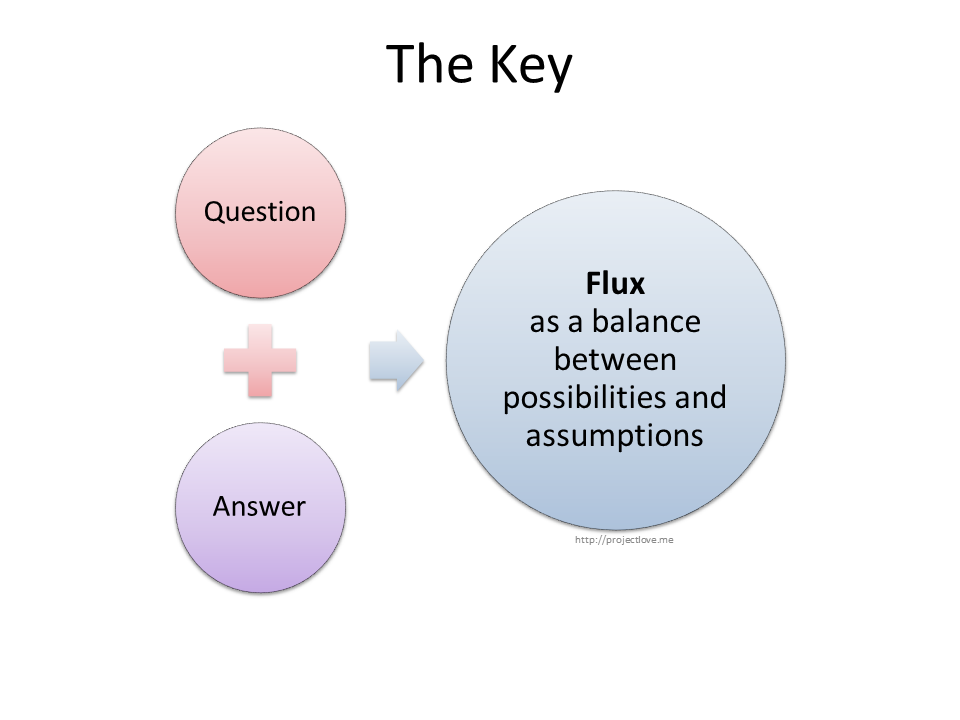This question is very difficult to answer because we have been conditioned to answer it in a superficial manner. It is very tempting to believe that I am my identity.1
If you believe in your identity as “the answer” to the question (Who am I?) without regarding the depth of “the question” (Who am I?), then we entrap the concept of ourselves. Thus, we become limited by our own historical conditioning.
What is an historical conditioning? It is the conditioning that comes from the culture that surrounds you. This culture includes your family. For example, did your someone tell you many times that you were very lazy or diligent (or anything else)? Did you believe it? If so, then you are being historically conditioned. The latter example is very simple, but there are more complex examples: Do you believe in science as the ultimate truth? Do you believe in a particular faith blindly? If so, these too are historical assumptions.
While being historically conditioned, our identity does not truly listen to the “I” as a question. The “I” as an answer becomes all we really see. The question simply becomes an enabler and a slave of the answer. This could be confusing if you have never thought about the question who am I beyond your identity. Therefore, how can we distinguish the “I” as a question from the “I’ as an answer?2
The “I” as a question is open-ended. The “I” as an answer is a fixed conceptualization. If “I” am X, then what about all those other things that are not X? What happens if I decide to change X? How can you change your identity if you assume X of yourself?
When we assure who we are, the “I” as an answer wants to overpower the “I” as a question. The idea of who we are becomes more powerful than reality itself.
If I believe the “I” as an answer, then I am trapped in my own assumptions. Once you are trapped, then it is very easy to become intolerant. You could be tempted to reject everything that threatens your assumptions. In this case, the answer shadows the question’s possibilities.
If the question is not the start of our reasoning, then the answer has become the start of our assumptions. How to liberate ourselves from the conditioning that has been given through history as an answer? How can we reduce our habituation to a rightness of the wrongness?
What is needed is to challenge answers and its assumptions. If you have a fixed answer, then you need to approach to the possibilities that gave birth to such intellectual certainty. For example, why do we assume the truth of science/religion/philosophy/etcetera? What gave rise to s/r/p/e as we know it today? How could s/r/p/e be wrong? What is the limit of s/r/p/e? How can I extend that limit?
How else can you continue to challenge answers and its assumptions?
Once we are able to challenge the answers’ arrogance, then the questions’ true depth would be revealed. A question would become a starting point toward our liberation from fixed assumptions that have been ruling our lives.
The freedom of knowing that you do not know allows the question to remain open. If a question is open, then there is an awareness of the limits of our knowledge. Once we can see the limits of our knowledge, we can challenge what we believe to know and assume. By challenging what we assume, then we can experience the constant birth of ideas/insights that could shape our everyday lives with fullness. But, what prevents us from acknowledging our weakness? What does not let us accept the wrongness of our assumed rightness? 3
The main assumption that does not allow us to say “I am wrong” is our identity. This fixed identity provides a sense of psychological security. Is this fixed identity needed? Well, it depends on you. Do you need to feel you control your surroundings to feel psychologically safe? If so, there is no need to overthrow your identity. Rather, our identity needs to be liberated from the oppression of ill assumptions. Identity has to become healthy again.
How can our identity become healthy? It becomes healthy by living with fulfillment and being creative. Such state of mind would be a new attitude toward the world because there would be living with openness toward the vastness of our surroundings, that is, to the vast possibilities of open questions.
As your identity becomes healthier, you will feel less need to control your surroundings. If you do not need to control your surroundings, then you can let things be. If you let things be, then you can accept open-ended pathways and the vastness of possibilities.
A new attitude would be born because there would be no need to be right. Once we heal ourselves, then we are able to open ourselves fully to the other truly as oneself.
How? We would realize that:
01There is more rightness as you broaden your perspective, but more wrongness if you see through a narrow perspective. There is more rightness because it allows you to observe through a multitude of lenses that help you understand the reason behind an apparent wrongness.
02 You see more wrongness as you narrow your perspective because there is an illusion of certainty. This certainty is gained through obscure narratives or by the use of particular and concrete examples that shape an argument as a true statement insofar it is framed in those terms.
Within a healthy identity, there is no longer a frustrating need to be right and prove it against all odds. If you do not need to prove yourself right, then you are free to listen deeply to the any other perspective that competes with yours.
Why would a healthy identity understand other’s assumptions and their perspectives? As you broaden, you can listen to others’ perspectives and make them yours. You can become so emphatic that you really understand the reason behind another person’s actions. You would be able to broaden your horizon to the point that your self-centered assumptions would disappear4 while you observe and act within the other person’s framework.5
Beware: Within an unfocused and inattentive state of consciousness, assumptions are prone to remain present but hidden.
In order for assumptions to actually disappear, one has to be in a state of constant awareness. A full attention to the present moment where there is no more mental chatter. This attention observes clearly through a peaceful state of mind.6 Through a clear attention, you are able to see your assumptions transparently. Transparency of the mind occurs through awareness and attention.
If you have followed what I have written, I have established a path toward liberation of our identity through questions. However, you might say: Couldn’t questions become an entrapment too? You might think that the only difference between the question and the answer is grammar. Well, we cannot stop here. It is not about liberating ourselves from fixed answers, but also from questions that have become like stale answers. This apparently fixed question (no question is really fixed only our approach to it is) has to be retraced through our answers.
Bias created by stale assumptions within question or answers will keep being a rear passenger unless we become aware of our internal processes. We can observe ourselves transparently, and thus redefine continually who we think we are.7
From the broad and abstract to the concrete and narrow, we can play. We can play in the space between the “I” as a question and the “I” as an answer: The Flux
In this flux, life can become a joy. I do not need to prove myself right to be happy. I can be wrong. I can be right. I can be neither or both.
In contrast to the “I” as a concrete answer, the “I” as a question (who am I?) becomes open to the extensive possibilities. We become part of this serious play with an open heart. They key is in finding a balance between our answers and questions in order to be limited but free enough to experience creative fullness and happiness.
Thus, the “I” as a question is an open box that can contain experience. Yet, this “I” as a question does not define its box as the whole of reality. The “I” as a question is not limited by our historical conditioned. Although the birth of a question is shaped by history, within the flux, we can continually challenge our past by being creative.
So, at the end who am I? Who are you? The answer lies in between questions and the question lies in between answers. Within this flux we will remain, until we resolve that it is time to become an unanswered question.
What is this unanswered question? The epitome of a question: a fluid answer, one without assumptions, truth. But then, what is truth?8
- The assumption that states: I am a doctor or a writer. I am of this race, skin color, etc. I am lazy or diligent. [↩]
- If I am the answer to the question: who am I, then what is the difference between the “I” as an answer and the “I” as a question? If the answer is the “I”, then it would appear that the answer “I” and the question “I” appear to be the same. The trick from distinguishing the question “I” and the answer “I” lies in distinguishing between the “I” as a concept or idea and the “I” as being, an actual process of experience. [↩]
- Remember: Sometimes, loose ends (questions) are as important as tight starts (answers). Progress occurs from loose ends, that is, challenging the assumptions of a tight start. [↩]
- However, we will still sustain assumptions for practical purposes. For example, I assume I exist. I assume this pen will fall due to gravity. I assume you are a human being if you can read this, etc. [↩]
- If you are interested in how to understand the other as yourself through dialogue; you can study the concept called fusion of horizons. This concept can be found in the work of the philosopher Hans-Georg Gadamer. Gadamer defines the horizon as the capacity to broaden your perspective and see the whole. Thus, a fusion of horizons is a continual process of understanding the other that never fulfills itself such as it occurs in a dialogue, see Hans-Georg Gadamer, Truth and Method (London: Continuum, 2004), 304-306. If you would like to read an explanation of Gadamer’s Fusion of Horizon and a solution to a main objection of the concept see here: http://www.davevessey.com/Gadamer_Horizons.htm. And if you would like to read about a practical situation such as a patient-doctor relationship see here: http://www.ncbi.nlm.nih.gov/pmc/articles/PMC2148246/pdf/bjgp58-058.pdf. You must be aware that these concepts are born out of broad concerns, but end up being narrow in order to sustain their arguments within a philosophical or academic discourse. [↩]
- If you are interested in obtaining an attentive state of mind. I would recommend you to read the following book: B. Alan. Wallace, The Attention Revolution: Unlocking the Power of the Focused Mind (Boston: Wisdom Publications, 2006), see introduction http://www.alanwallace.org/attrev.pdf. [↩]
- The point here is to highlight the word continually. We need to continue an iterative process in order to observe our bias more and more clearly. A single iteration is a good start, but real progress occurs through continual iterations. [↩]
- If you want to know more about the unanswered question, then I would recommend you to read or watch: Leonard Bernstein, The Unanswered Question: Six Talks at Harvard (Cambridge, MA: Harvard University Press, 1976), see http://www.youtube.com/playlist?list=PL69CA077B63BD5358. [↩]

